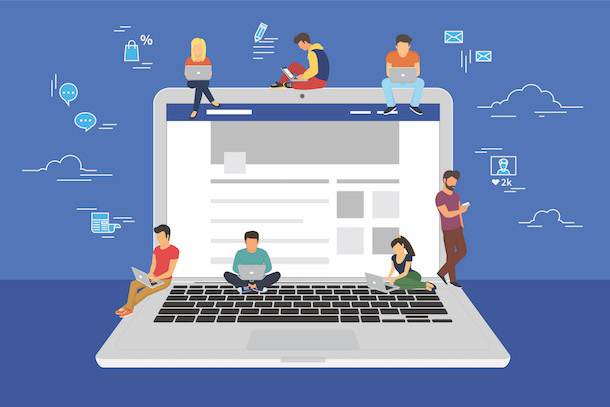At an Apple event in January 2010, Steve Jobs unveiled the iPad:
“What this device does is extraordinary. … It is the best browsing experience you’ve ever had … way better than a laptop, way better than a smartphone. … It’s an incredible experience. … Phenomenal for mail. … It’s a dream to type on.”
For 90 minutes, Jobs explained why the iPad was the best way to look at photos, listen to music, take classes on iTunes U, browse Facebook, play games, and navigate thousands of apps. He believed everyone should own an iPad.
But he refused to let his kids use the device.
In late 2010, Jobs told New York Times journalist Nick Bilton that his children had never used the iPad. “We limit how much technology our kids use in the home.” Bilton discovered that other tech giants imposed similar restrictions. Chris Anderson, the former editor of Wired, enforced strict time limits on every device in his home, “because we have seen the dangers of technology firsthand.” His five children were never allowed to use screens in their bedrooms. Evan Williams, founder of Blogger, Twitter, and Medium, bought hundred of books for his two young sons but refused to give them an iPad. Walter Isaacson, who ate dinner with the Jobs family while researching his biography of Steve Jobs, told Bolton that “No one ever pulled out an iPad or computer. The kids did not seem addicted at all to devices.” It seemed as if the people producing tech products were following the cardinal rule of drug dealing: never get high on your own supply.
This is unsettling. Why are the world’s greatest public technocrats also its greatest private technophobes? Can you imagine the outcry if religious leaders refused to let their children practice religion? Many experts both within and beyond the world of tech have shared similar perspectives with me. Several video game designers told me they avoided the notoriously addictive game World of Warcraft; an exercise addiction psychologist called fitness watches dangerous — “the dumbest things in the world” — and swore she’d never buy one; and the founder of an internet addiction clinic told me she avoids gadgets newer than three years old. Her favorite computer game is Myst, released in 1993 when computers were still too clunky to handle video graphics.
Greg Hochmuth, one of Instagram’s first software engineers, realized he was building an engine for addiction. “There’s always another hashtag to click on,” Hochmuth said. “Then it takes on its own life, like an organism, and people can become obsessive.” Instagram, like so many other social media platforms, is bottomless. Facebook has an endless feed; Netflix automatically moves on to the next episode in a series; Tinder encourages users to keep swiping in search of a better option. Users benefit from these apps and websites but also struggle to use them in moderation. According to Tristan Harris, a “design ethicist,” the problem isn’t that people lack willpower; it’s that “there are a thousand people on the other side of the screen whose job it is to break down the self-regulation you have.”
These tech experts have good reason to be concerned. Working at the far edge of possibility, they discovered two things. First, that our understanding of addiction is too narrow. We tend to think of addiction as something inherent in certain people — those we label as addicts. The label implies that they’re different from the rest of humanity. They may rise above their addictions one day, but for now they belong to their own category. In truth, addiction is produced largely by environment and circumstance. These entrepreneurs know this. They recognize that the tools they promote — engineered to be irresistible — will ensnare users indiscriminately. There isn’t a bright line between addicts and the rest of us. We’re all one product or experience away from developing our own addictions.
Bilton’s tech experts also discovered that the environment and circumstance of the digital age are far more conducive to addiction than anything humans have experienced in our history. In the 1960s, we swam through waters with only a few hooks: cigarettes, alcohol, and drugs that were expensive and generally inaccessible. In the 2010s, those same waters are littered with hooks. There’s the Facebook hook. The Instagram hook. The porn hook. The email hook. The online shopping hook. And so on. The list is long — far longer than it’s ever been in human history, and we’re only just learning the power of these hooks.
Tech offers convenience, speed, and automation, but it also brings large costs. Human behavior is driven in part by a succession of reflexive cost-benefit calculations that determine whether an act will be performed once, twice, a hundred times, or not at all. When the benefits overwhelm the costs, it’s hard not to perform the act over and over again, particularly when it strikes just the right neurological notes.
A like on Facebook and Instagram strikes one of those notes, as does the reward of completing a World of Warcraft mission, or seeing one of your tweets shared by hundreds of Twitter users. The people who create and refine tech, games, and interactive experiences are very good at what they do. They run thousands of tests with millions of users to learn which tweaks work and which ones don’t. As an experience evolves, it becomes an irresistible, weaponized version of the experience it once was. In 2004, Facebook was fun; in 2016, it’s addictive.
I spoke to several clinical psychologists who described the magnitude of the problem. “Every single person I work with has at least one behavioral addiction,” one psychologist told me. “I have patients who fit into every area: gambling, shopping, social media, email, and so on.” She described several patients, all with high-powered professional careers, earning six figures, but deeply hobbled by their addictions. “One woman has two master’s degrees and she’s a teacher. But she’s addicted to online shopping, and she’s managed to accumulate $80,000 in debt. She’s managed to hide her addiction from almost everyone she knows.” This compartmentalization was a common theme. “It’s very easy to hide behavioral addictions — much more so than for substance abuse. This makes them dangerous, because they go unnoticed for years.” A second patient, just as accomplished at work, “went through a horrible breakup, and then stalked her ex-boyfriend online for years. With Facebook, it’s far more difficult to make a clean break when relationships end.”
“The impact of social media has been huge,” a second psychologist told me. “Social media has completely shaped the brains of the younger people I work with. I could be five or ten minutes into a conversation with a young person about the argument they have had with their friend or girlfriend, when I remember to ask whether this happened by text, phone, on social media, or face-to-face. More often the answer is, ‘text or social media.’ Yet in their telling of the story, this isn’t apparent to me. It sounds like what I would consider a ‘real,’ face-to- face conversation. I always stop in my tracks and reflect. This person doesn’t differentiate various modes of communication the way I do … the result is a landscape filled with disconnection and addiction.”
Technology is not inherently bad. When my brother and I moved with my parents to Australia in 1988, we left our grandparents in South Africa. We spoke to them once a week on expensive landline calls and sent letters that arrived a week later.
When I moved to the United States in 2004, I emailed my parents and brother almost every day. We talked on the phone often, and waved to each other via webcam as often as we could. Technology shrank the distance between us.
Tech isn’t morally good or bad until it’s wielded by the corporations that fashion it for mass consumption. Apps and platforms can be designed to promote rich social connections, or, like cigarettes, they can be designed to addict. In many respects, substance addictions and behavioral addictions are very similar. They activate the same brain regions, and they’re fueled by some of the same basic human needs: social engagement and social support, mental stimulation, and a sense of effectiveness.
Behavioral addiction consists of six ingredients: compelling goals that are just beyond reach, irresistible and un- predictable positive feedback, a sense of incremental progress and improvement, tasks that become slowly more difficult over time, unresolved tensions that demand resolution, and strong social connections. Despite their diversity, today’s behavioral addictions embody at least one of those six ingredients. Instagram is addictive, for example, because some photos attract many likes, while others fall short. Users chase the next big hit of likes by posting one photo after another, and return to the site regularly to support their friends. Gamers play certain games for days on end because they’re driven to complete missions and because they’ve formed strong social ties that bind them to other gamers.
So what are the solutions? How do we coexist with addictive experiences that play such a central role in our lives? Millions of recovering alcoholics manage to avoid bars altogether, but you can’t apply for a travel visa or a job without an email address. Hardly any modern jobs allow you to avoid using computers. Abstinence isn’t an option, but there are other alternatives. You can confine addictive experiences to one corner of your life while courting good habits that promote healthy behaviors. Meanwhile, once you understand how behavioral addictions work, you can mitigate their harm, or even harness them for good. The same principles that drive children to play games might drive them to learn at school, and the goals that drive people to exercise addictively might also drive them to save money for retirement.
Addictions are damaging because they crowd out other essential pursuits, from work and play to basic hygiene and social interaction. The good news is that our relationships with behavioral addiction aren’t fixed. There’s much we can do to restore the balance that existed before the age of smartphones, emails, wearable tech, social networking, and on-demand viewing. The key is to understand why behavioral addictions are so rampant, how they capitalize on human psychology, and how to defeat the addictions that hurt us and harness the ones that help us.
A decade ago, who could have imagined that Facebook would attract 1.5 billion users, many of whom say they wished they spent less time on the site? Or that millions of Instagram users would spend hours uploading and liking the 60 million new photos the app hosts every day? Or that more than 20 million people would count and monitor their every step with a small wrist-bound device?
These are remarkable statistics, but they represent an early waypoint on a long climb. Behavioral addiction is still in its infancy, and there’s a good chance we’re still at base camp, far below the peak. Truly immersive experiences, like virtual reality devices, have not yet gone mainstream. In 10 years, when all of us own a pair of virtual reality goggles, what’s to keep us tethered to the real world? If human relationships suffer in the face of smartphones and tablets, how are they going to withstand the tide of immersive virtual reality experiences?
We can’t abandon technology, nor should we. Some technological advances fuel behavioral addiction, but they are also miraculous and life enriching. And with careful engineering they don’t need to be addictive. It’s possible to create a product or experience that is indispensable but not addictive. Workplaces, for example, can shut down at six — and with them, work email accounts can be disabled between midnight and five the next morning. Games, like books with chapters, can be built with natural stopping points. Social media platforms can “demetricate,” removing the numerical feedback that makes them vehicles for damaging social comparison and chronic goal-setting. Children can be introduced to screens slowly and with supervision, rather than all at once. If app designers can coax people to spend more time and money on a smartphone game, perhaps policy experts can also encourage people to save more for retirement or donate to more charities.
Our attitude to addictive experiences is largely cultural, and if our culture makes space for work-free, game-free, screen-free downtime, we and our children will find it easier to resist the lure of behavioral addiction. In its place, we’ll communicate with one another directly rather than through devices, and the glow of these social bonds will leave us richer and happier than the glow of screens ever could.
Adam Alter has written for The New York Times, New Yorker, Atlantic, and WIRED, among other publications, and is author of The New York Times best-seller Drunk Tank Pink (Penguin, 2013).
Become a Saturday Evening Post member and enjoy unlimited access. Subscribe now




Comments
Excellent article. It makes perfect sense the world’s greatest public technocrats are also (privately) its greatest technophobes, not allowing their children to become prisoners of their own devices.
They’ve got billions of dollars at stake unleashing this never-ending stuff on a public largely not sophisticated enough to know when to say ‘enough’ or ‘no’ to all they’re bombarded with. It’s similar to the other addictions mentioned, except these things are always with people; almost like outer body parts waiting for the day they become internal body parts, literally.